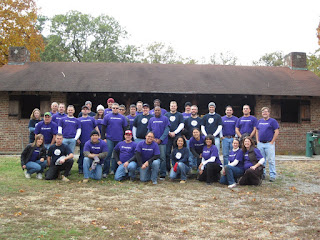By Jessica Templeton, James River Ecology School Manager
As a recent Nevada resident, where empty horizons and
remote vistas are the norm, I regularly find myself on the hunt for remote
unpopulated places to recreate here in Virginia. Recently, I found this sought after outdoor
experience on a trail run at Dutch Gap Conservation Area. I shared the trail with a couple of bikes,
walkers, and families, but for the most part the run was spent surrounded by trees
and water with nothing to listen to but the wind in the leaves above.
The 4.5 mile trail system at Dutch Gap Conservation Area
offers an easy but scenic hike by the James River not far from Hopewell,
Richmond, or Petersburg city centers.
The trail begins behind the Citie of Henricus visitor center and then
follows the path of the old James River channel’s oxbow bend. The hike takes you through forested areas
with plenty of views of the tidal lagoon where folks like to fish and paddle
the calm waters. The trails are largely
unpopulated, leaving many opportunities for wildlife observation, including
great habitat for bird watching.
The conservation area is adjacent to Dominion’s
Chesterfield Power Station; however don’t let this part
of the view deter you from visiting this somewhat hidden natural area. The low traffic, wildlife, and scenic
forested and river views make it well worth the trip. For the dog lovers out there, the park does
also allow pets on the trails when controlled by a leash. Let us know about your visit to Dutch Gap or tell
is your favorite place to visit when you are seeking a quiet moment outdoors.
For directions and more information about Dutch Gap,
please visit the Chesterfield Parks and Recreation website: http://www.chesterfield.gov/Parks.aspx?id=6442454866.
For more detailed information about the hiking trails
visit: http://www.hikingupward.com/ovh/dutchgap/.














































